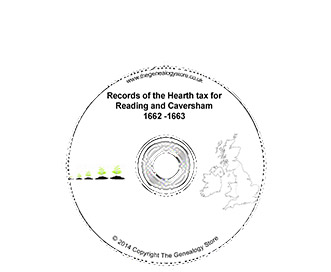
Records Of The Hearth Tax For Reading & Caversham 1662-1663
In England, hearth tax, also known as hearth money, chimney tax, or chimney money, was a tax imposed by Parliament in 1662, to support the Royal Household of King Charles II. Following the Restoration of the monarchy in 1660, Parliament calculated that the Royal Household needed an annual income of £1,200,000. The hearth tax was a supplemental tax to make up the shortfall. It was considered easier to establish the number of hearths than the number of heads, hearths forming a more stationary subject for taxation than people. This form of taxation was new to England, but had precedents abroad. It generated considerable debate, but was supported by the economist Sir William Petty, and carried through the Commons by the influential West Country member Sir Courtenay Pole, 2nd Baronet (whose enemies nicknamed him "Sir Chimney Poll" as a result). The bill received Royal Assent on 19 May 1662, with the first payment due on 29 September 1662, Michaelmas.
One shilling was liable to be paid for every firehearth or stove, in all dwellings, houses, edifices or lodgings, and was payable at Michaelmas, 29 September and on Lady Day, 25 March. The tax thus amounted to two shillings per hearth or stove per year. The original bill contained a practical shortcoming in that it did not distinguish between owners and occupiers and was potentially a major burden on the poor as there were no exemptions. The bill was subsequently amended so that the tax was paid by the occupier. Further amendments introduced a range of exemptions that ensured that a substantial proportion of the poorer people did not have to pay the tax.
Exemption certificates had to be signed by a minister, a churchwarden, or an overseer of the poor and two Justices of the Peace. From 1664, everybody whose home had more than two hearths was liable to pay the tax, even if otherwise exempt, and changes were made to reduce the scope for tax avoidance.
Revenue generated in the first year was less than expected, so from 1663, the names and number of hearths were required to be listed even if non-liable. This additional detail has made the relevant hearth tax documents particularly useful to modern historians and other researchers. However, details of householders who were not liable to pay the tax were not recorded for all years of its operation, as they were not needed for audit purposes when the right to collect the tax was "farmed" for collection by contractors in return for their payment of a fixed premium.
The arrangements for collecting the hearth tax varied during its lifetime








